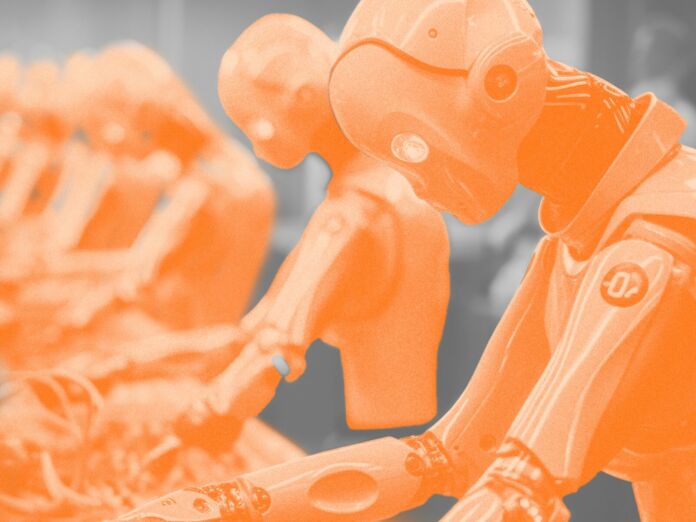
Fonseca Advisers LLC – November 4, 2024
Collected at: https://www.iotforall.com/adapting-to-advanced-manufacturing-the-potential-of-robotics-and-automation
Manufacturing is undergoing a significant transformation as robotics and automation take center stage. These technologies offer the potential to streamline operations, enhance product quality, and boost competitiveness in an industry that is constantly evolving.
For those steering the industry forward, understanding how to seamlessly integrate these innovations is crucial for long-term success.
The Benefits of Robotics and Automation for Manufacturing
- Improving Efficiency: Automation is a key driver of efficiency, helping to reduce cycle times by streamlining workflows and eliminating bottlenecks. Machines work with consistent speed and precision, which increases output. This not only speeds up production but also enables manufacturers to respond more swiftly to changing market demands.
- Precision in Quality: Robots excel at performing tasks with a high degree of accuracy and repeatability. By reducing errors, automation ensures uniform output and enhances product quality. This level of precision is particularly valuable in industries where strict standards are essential, such as aerospace, automotive, and electronics manufacturing.
- Safer Work Environments: Automation takes over dangerous or physically demanding tasks, improving workplace safety. By reducing human involvement in hazardous processes, it helps lower the rate of workplace injuries and the associated costs. Moreover, a safer work environment can lead to higher employee satisfaction and better retention rates.
- Flexible Production: Today’s automation technologies are incredibly adaptable, and easily reprogrammable to accommodate changes in product design or production volumes. This flexibility allows manufacturers to stay responsive to customer demands and market shifts, providing a competitive edge in an ever-changing industry landscape.
Key Considerations Before Implementation
Successfully adopting robotics and automation into manufacturing requires careful planning and consideration of several factors:
- Weighing Costs and Benefits: The initial investment in automation can be significant. A thorough cost-benefit analysis is essential, weighing upfront expenses against gains in efficiency, product quality, and long-term savings. It’s also important to factor in ongoing costs such as maintenance, training, and potential downtime.
- Workforce Implications: Automation will reshape the workforce, requiring companies to invest in upskilling and reskilling employees. Offering training opportunities helps workers manage and maintain these new systems, fostering a culture of continuous learning and innovation within the organization.
- Seamless System Integration: Ensuring that new automation systems integrate smoothly with existing infrastructure is critical. Compatibility issues can cause disruptions and inefficiencies, so careful planning and collaboration with technology providers is vital to minimize integration challenges.
- Managing Organizational Change: Implementing advanced technologies can lead to significant organizational changes. Involving stakeholders at all levels, from leadership to frontline employees, helps ensure a smooth transition. Open communication about goals, benefits, and impacts can foster a culture that embraces innovation.
Laying the Foundation for Success
A strategic approach to implementation can maximize the benefits while minimizing disruptions:
- Identify Operational Gaps: Start by thoroughly analyzing current operations to identify where automation can have the most significant impact. Focus on repetitive tasks, bottlenecks, or areas with high variability. A targeted approach ensures that resources are used effectively.
- Create a Detailed Plan: Set clear objectives, and realistic timelines, and define the resources needed for implementation. A well-structured roadmap helps monitor progress and aligns the project with broader organizational strategies. Involving cross-functional teams provides valuable insights and expertise.
- Run Pilot Programs: Start with small-scale pilot programs to gather practical insights without the risks of a full-scale rollout. These pilots allow for testing assumptions, identifying potential challenges, and refining processes, laying the groundwork for a successful broader implementation.
- Invest in Workforce Training: Equip employees with the necessary skills to operate and maintain new technologies through comprehensive training programs. This investment not only enhances operational efficiency but also shows a commitment to employee growth and development.
- Collaborate with Technology Experts: Working with experienced technology providers can help guide the process. These experts can assist in selecting the right tools, customizing solutions, and providing ongoing support, which can help avoid common pitfalls and accelerate implementation.
Overcoming Challenges
As with any major initiative, integrating robotics and automation comes with its own set of challenges that need to be proactively managed:
- Technical Challenges: Technical issues, such as system malfunctions or integration problems, can disrupt operations. Establishing regular maintenance schedules and ensuring access to prompt technical support are essential to address issues quickly and minimize downtime.
- Cybersecurity Risks: As systems become more interconnected, cybersecurity becomes a critical concern. Strong safeguards, including firewalls, encryption, and regular security audits, are essential to protect sensitive data and maintain system integrity.
- Compliance with Regulations: Adhering to industry regulations is crucial during the implementation process. Staying compliant ensures that operations remain legally and ethically sound, and helps build trust with customers and stakeholders. Staying on top of regulatory changes is key to avoiding costly oversights.
Looking Ahead
As robotics and automation become more accessible, these technologies are no longer just for large corporations. Small and medium-sized manufacturers can also take advantage of technological advancements that reduce costs and simplify implementation. Aligning automation efforts with overall business goals positions manufacturers for growth and innovation.
Robotics & Automation for Manufacturing
Adopting advanced manufacturing technologies such as robotics and automation is a strategic decision that can enhance operational efficiency and help manufacturers stay ahead of market demands.
With careful planning, thorough analysis, and active stakeholder engagement, manufacturers can harness the power of robotics and automation to improve efficiency, and product quality, and secure a competitive edge in the rapidly evolving industrial landscape.

Leave a Reply